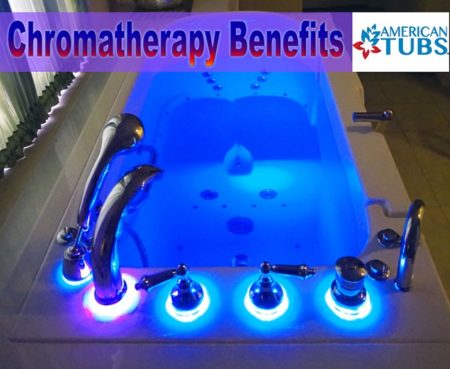Aging in Place and Reconsidering Bathing
A major challenge for caregivers, especially those caring for loved ones with dementia is bathing. Difficulties with bathing and toileting often force families to make the difficult decision to place a loved one. Yet, most of us, including our loved ones, would prefer to age in place.
We mention the phrase “aging in place,” frequently; yet, how many of us have taken steps to prepare our homes? Using the bathroom becomes a major obstacle.
 Enter Rachel Quaill of American Tubs, a manufacturer of walk-in tubs. Rachel reached out to advertise on The Caregiver’s Voice. I suggested that we work together to build awareness, instead. The Caregiver’s Voice gratefully acknowledges and appreciates their sponsorship and support.
Enter Rachel Quaill of American Tubs, a manufacturer of walk-in tubs. Rachel reached out to advertise on The Caregiver’s Voice. I suggested that we work together to build awareness, instead. The Caregiver’s Voice gratefully acknowledges and appreciates their sponsorship and support.
A New Bathing Experience
You and I have seen the ads for walk-in tubs in magazines. If you’re like me, you’ve wondered, would one of these tubs work for me? Or if you’re caring for a loved one in your home, would a walk-in tub make it easier for your loved one who resists bathing?
After being diagnosed with dementia, my father lived with us. My husband and I found it challenging getting him to bathe. When my father agreed to bathe, we worried he might trip, stepping in and out of the tub. While in the shower, he’d sometimes forget what to do.
When we moved into a fixer-upper home, we made some aging-in-place changes such as installing lever door handles and easy-to-open windows. I’ve learned a lot working with caregiving families. We even had double railings installed to make it easier to go up and down the stairs. We still need to remodel two bathrooms and the kitchen.
While I enjoyed the outdoor spa at our previous home, I’ve never used the big bathtub with jets in our current home. I like the idea of a smaller cozier tub filled with water to enjoy a more personal spa experience. And when I get old(er), I’d like to think I’ll enjoy multiple spa experiences in my own home.
American Tubs prides itself on each design detail to ensure a safe and comfortable tub. Depending on the features you choose, you may find yourself relaxing among air bubbles or relieving sore spots with a strategically placed Jet system. Hydrotherapy eases joint and muscle pain while improving blood flow. Chromotherapy (use of varying colors) has been shown to have beneficial therapeutic properties as well.
Helping a confused loved one with dementia bathe in a relaxing setting is ideal and may delay the need for placement. A walk-in tub is easier to get in and out of. The cozy interior will help caregivers aid loved ones with bathing.
Enjoy a comfortable bathing experience by wrapping a warm towel around your or your loved one’s shoulders until the tub fills with water. Remove the towel until you’re ready to drain the tub. American Tubs guarantees your tub will drain in less than two minutes with their patented the HurryDrain© Fast Drain and overflow kit.
Additional Information on the American Tubs website
☆ Walk-in tub types
☆ Who needs a walk-in tub?
☆ Benefits of walk-in tub
[TCV Ed Update 9/23/2019: URLs to last two items above are no longer available.]
Call to learn more about walk-in tubs
 American Tubs are made in the USA with the safety and quality of each tub guaranteed. Located in City of Industry, California, they ship custom-made tubs throughout the US.
American Tubs are made in the USA with the safety and quality of each tub guaranteed. Located in City of Industry, California, they ship custom-made tubs throughout the US.
Click for more information about walk-in tub features. [TCV Ed. URL updated 9/23/2019] Then take one step and call 877-818-7699. Discuss options and pricing while the information is fresh in your mind. Schedule a visit to a local office to try one! This way, you’ll learn something new and know what to expect when you decide it’s time for a bathroom makeover.









Great post!!
🙂
Hi The Caregivers Voice Team,
My name is Anuj Agarwal. I’m Founder of Feedspot.
I would like to personally congratulate you as your blog The Caregivers Voice has been selected by our panelist as one of the Top 60 Dementia Blogs on the web.
http://blog.feedspot.com/dementia_blogs/
I personally give you a high-five and want to thank you for your contribution to this world. This is the most comprehensive list of Top 60 Dementia Blogs on the internet and I’m honored to have you as part of this!
Also, you have the honor of displaying the badge on your blog.
Best,
Anuj
Anuj,
Thank you!
We saw this and considered our Lucky 13 placement!
We posted it to The Caregiver’s Voice Facebook Page.
Again, thank you.
Brenda Avadian
Excellent blog!!! It is so much beneficial for the cancer patient. Walk in bathtubs has taken a huge popularity among individuals in today’s world. It is one of the successes in technology that bathtub also comes with chemotherapy feature, Great! But along with these features does anyone know that walk in bathtubs also comes with hydrotherapy, aromatherapy, heated seats, whirlpool and air jet features inbuilt in it. This was surprising for me too, when I came to know about it through my aunt. She installed it from http://www.walkinbathtubaz.com and later created awareness about the result she got.
I’m assuming James means “chromatherapy” rather than “chemotherapy” feature in his comment. You’ll read about some of these features he mentions in the article.
Brenda, beleive me this was one of the options as the dementia became worse with my Marie. However, it got to the point that people recommended not installing one of these tubs. In my case. Marie was afraid of the water, fear we were trying to drown her. W used the device that you can slide a person into the shower, wash them up and slide them out. This did not ever work well with about 2 months left in her life. I thought really seriously about this tub, even for myself. Good idea but make sure the person is not afraid of water.
Good point about fear of water, Don. Imagine how one would feel in a shower!
At least, this has been what I’ve learned when people with dementia are afraid of water.
Don’t you think a small personal-sized tub like these would make it easier to adapt to as the water fills and covers toes, ankles and up to the calves with a warm towel around ones shoulders?
This has been my thinking.
Then again, we are all unique individuals.